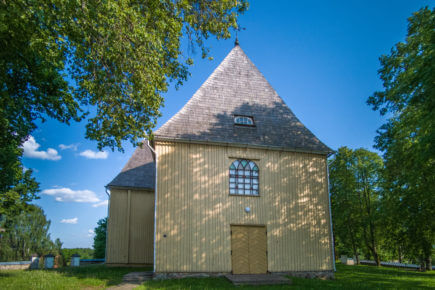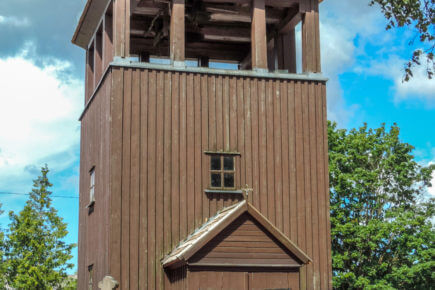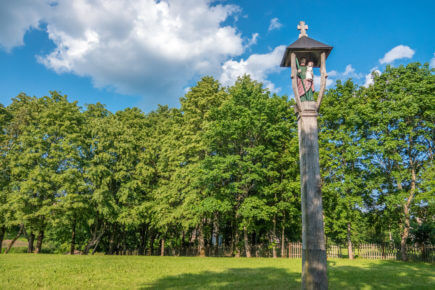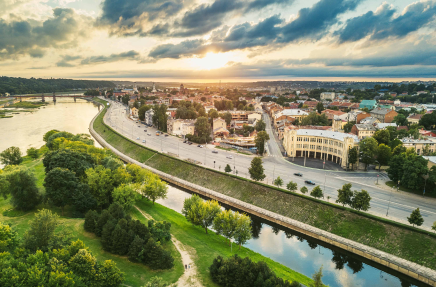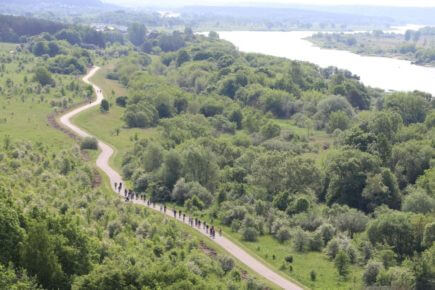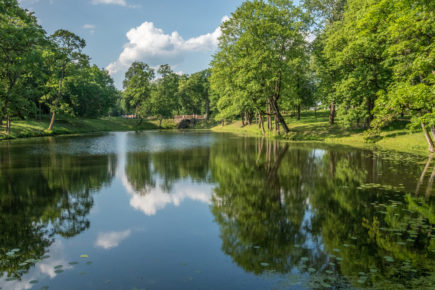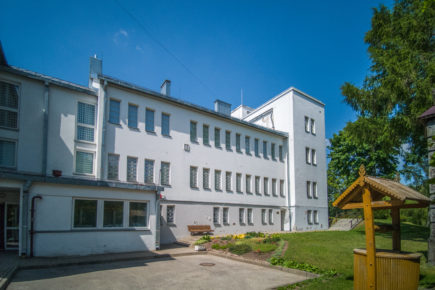One of the oldest churches in Lithuania is the Plateliai Church of St. Peter and St. Paul. The church has a history that even the churches of major Lithuanian cities cannot rival. This small church withstood many trials along the difficult path of survival, including war and brutal fire that would have otherwise destroyed it in an instant.
The history of the spread of Catholicism in Lithuania reveals that the first Catholic parishes began to form in the 14th century on the initiative of the Grand Duchy of Lithuania. Later, private citizens undertook these activities. The nobility supported the construction of churches with their own funds and gave them benefice. In the first half of the 16th century, the number of churches established on the initiative of nobles increased significantly. Since Catholicism was adopted later in Samogitia, the first parishes were only established there at the beginning of the 15th century. The parishes were very far apart. The network of parishes began to expand at the beginning of the 16th century thanks to the involvement of nobles.
The Plateliai area has a rare beauty. Driving along Lake Plateliai towards the mills, you can see many chapels by the roadside, most of which depict Christ in prison. The chapels have different looks; one depicts a church with two towers, another has an iron cross, and others have wooden ones.
The first church was built at the beginning of the 16th century in the sacral surroundings of Plateliai. In 1523, Jonavičius (Kęsgaila), the son of a Samogitian elder, left a part of his property to the church. Jokūbas Laskauskis built a wooden church in Plateliai. During the Reformation, after 1567, the Plateliai Church, like many others, was closed and abandoned. From 1598 to 1608, a new, third, church was built in Plateliai funded by Jeronimas Valavičius.
The Church of St. Peter and St. Paul was the fourth church in Plateliai. Juozapas Vaitkevičius built it in 1744 with the help of his parishioners. In 1777, under the care of the same priest, the Plateliai Church was rebuilt. The priest, who had been a pastor in Plateliai for almost his entire life, is buried in the crypt of the church under the altar of St. Joseph.
The Church of St. Peter and St. Paul is built of hewn logs and is in exceptional shape with an authentic appearance. In fact, although the church has been repeatedly renovated and repaired, it has hardly changed its original form. To better imagine this, it is necessary to know that it almost corresponds to a church built in the 18th century. Stanislovas Kęsgaila, a nobleman of the Grand Duchy of Lithuania, and a state and military figure, built it.
The church building is in the shape of a Latin cross with one nave and a three-walled apse. A high roof adorned with small towers topped by crosses dominates its exterior. The external shapes are modest; they include small vertical table walls and large cross-shaped rectangular windows. A thick masonry fence with three gates surrounds the church. The children of the owners of Plateliai Manor are buried in the churchyard: Countess Marija Choiseul and her brother Gabrielius. A wooden bell tower housing bells from 1648 and 1928 is also installed in the front corner of the churchyard. In the past, there were two more bells that were eventually requisitioned by the Germans during the First World War – they were melted down to make cartridge cases. A bell is an instrument inspired by God that connects heaven and earth with its sublime sounds. The sounds of the bells generally mark a sacral time that shifts thoughts from everyday life to eternity. Legend has it that the first bronze bell was made around 410 by Bishop Pontijus Meronijus Paulinas, who was inspired by the flowers of the meadows scattered by the winds. The bishop lived in the northern Italian province of Campania in the town of Nola. Since then, the church’s large bell is called kampana and the small one is called nula.
The exterior of the church looks simple, but when you go inside, the interior is radically different. The church is small and cosy, which often makes it difficult for all the townspeople and their guests to fit in. It radiates an exceptional spirit of holiness. The interior of Plateliai Church is decorated with a main Baroque altar and four side altars. They are decorated with columns, paintings with silver trim and various carvings. The altars were painted white and gilded in the 18th century.
The left chapel has a Rococo baptismal font that holds baptismal water and baptismal oils. This baptismal font has survived since the church was built. The walls are adorned with paintings of saints with luxurious furnishings, which suggests the church was once rich. There are also many old paintings and liturgical clothes from the 17th and 18th centuries, as well as a metal cup, three vestments and a sculpture of the Crucified from the middle of the 19th century. Visitors are also drawn to the paintings of St. Family, St. Archangel Michael and St. Barbora, the Revelation of the Virgin Mary, St. Antanas Paduvietis, and St. Peter and Paul.
The end of the church nave features an organ choir with a graceful arcade at the top and archaic singers’ lodges at the bottom. An organ of ten voices, a large drum and clinking bells stood in this choir in the 17th century. The current organ has been standing there for over 100 years. In 1909, organ builder Jonas Garalevičius built a new organ that still works to this day. The sound is perfect for the liturgy; moreover, it can be heard in a large part of the Plateliai area.
The church is open on Sundays for mass. For those who want to visit at other times, the door can be unlocked by the pročkelė, a word of Polish origin stemming from the word praczka, which means laundry lady.


